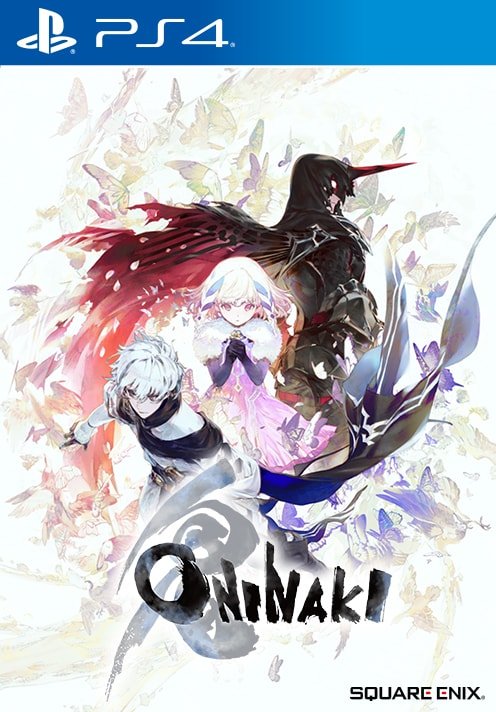Oninaki wears on you quickly. Tokyo RPG Factory’s latest game, following I Am Setsuna and Lost Sphear, is as strong of an idea as it is weak in execution. It is lackluster, even though there are moments where its potential shines through. In that way, it is much like its predecessors. Only this time, there is no undercurrent of nostalgia to keep it afloat.
Yet that’s not what it appears to be at first glance. In the world of Oninaki, people reincarnate after they die. If a person has regrets or if their friends and family feel sadness, they will not be reborn, instead becoming monsters known as the Lost. That means that people must not grieve the dead, and it is harshly frowned upon if one does. Policing this realm are the Watchers, including main character Kagashi, whose ensure that the dead can pass on unburdened by the living. This also means fighting back against the Lost using spirits called daemons.
Reincarnation existing affects the kingdom and its people from the top down. Death is seen as a mercy, and criminals are instead imprisoned for life. Cults spring up that advocate suicide in order to hasten people’s reincarnation so that they may find a better life. And in a memorable sequence in the opening, two parents decide to be killed so that their grief doesn’t prevent their child from crossing over.

This is a fantastic start, but one that is undermined in short order thanks to how the story is told. The brief flashes in the beginning that show how society functions with reincarnation at the forefront are just that — flashes; the implications of which are left unexplored beyond a short glance. Instead, Oninaki’s story focuses on Kagashi and his investigation into the Night Devil, a powerful spirit who was once famed for murdering hundreds while he was alive. Along the way, he meets a mysterious young girl named Linne, who both holds the key to defeating the Night Devil and has a strange connection with Kagashi.
It’s a shame that this is the tale Oninaki focuses on because it’s paced poorly. The opening act presents you with a multitude of characters and quests for you to undertake, none of which are cohesively told or made interesting. When it does become more compelling, particularly in the latter half, it is interrupted by moments that drag on for far too long, such as an extended sequence where you must return to previously visited areas to watch cutscenes. There are moments where Tokyo RPG Factory succeeds in making you care about Kagashi and his world, but these are undermined by the vast majority of scenes that are as perfunctory as they are unsatisfying.
Take the spirit world as an example. Kagashi can willingly travel between the living world and the spirit world with the push of a button in order to contact the dead and defeat Lost. Sometimes, you have to defeat an empowered enemy to travel the spirit world without suffering debilitating debuffs. And as promising as this mechanic is, it’s only real use is to accept fetch side quests from the dead and to occasionally use a portal mechanic to access areas one otherwise wouldn’t be able to.
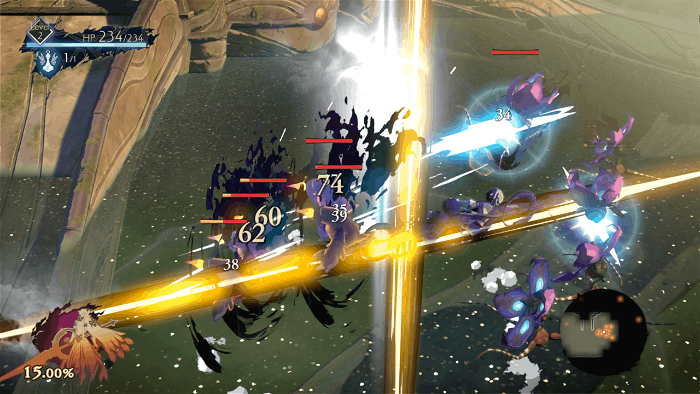
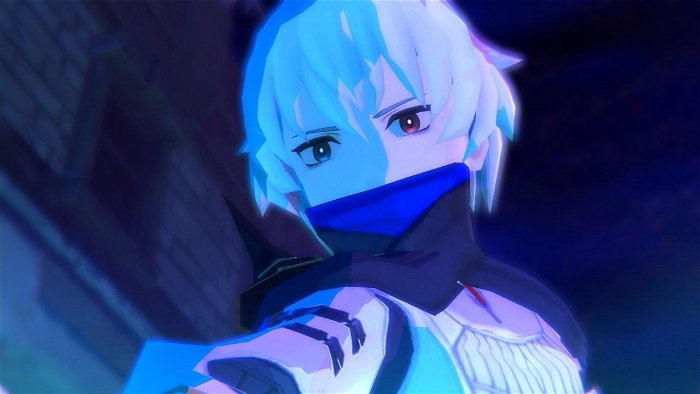
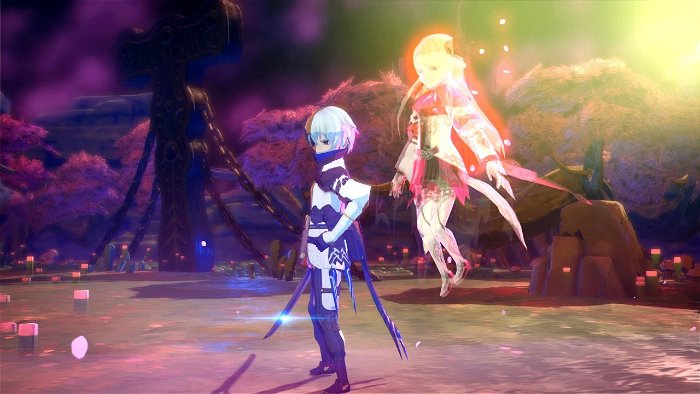
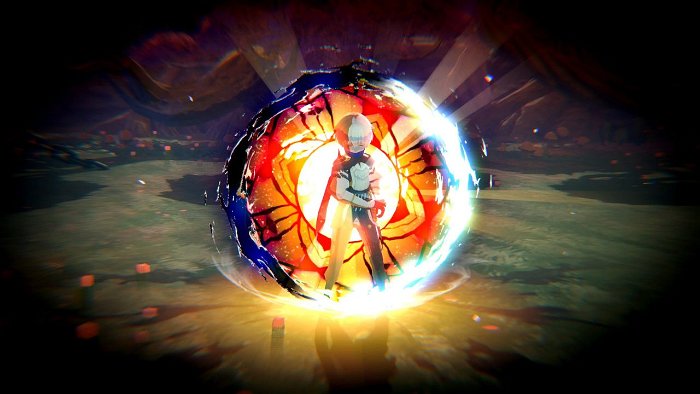
What’s more, exploration itself is bland. Each area feels like it was pulled from the generic-RPG location pile, complete with very linear paths, and there’s rarely anything that makes Oninaki stand out. Visually, this is Tokyo RPG Factory’s best-looking game, but it’s not because the locations are original. The use of vibrant colours does much to alleviate this problem, and attacks in battle do look visually pleasing. But that doesn’t make the world itself fun to traverse.
This is not helped by the combat, which is that of a standard hack-and-slash. Each of the daemons Kagashi comes to recruit over the course of his journey has a different weapon they specialize in, along with a handful of unlockable special attacks and a defensive move. For example, one daemon uses a series of chains that can be used to inflict status effects on enemies, which works well in conjunction with his jump to both avoid damage and attack from the air. The more you fight with a daemon, the more skill stones you get to unlock upgrades for them. You can only have four daemons in your party at a time, but Kagashi can switch to any of them in the middle of battle.
But while the differences between each daemon are pronounced, the biggest problem of Oninaki lies in just how repetitive the combat is regardless of which one you use. At any one moment, Kagashi can only use one basic attack, four special moves, and a defensive dodge or shield. This makes nearly every battle one-note, as you’ll find yourself repeating the same patterns over and over again. Attack, special attack, dodge, repeat. Maybe you’ll use every special attack in a row, in which case you can look forward to mashing the attack button or running in circles until your abilities recharge. Against normal enemies, who will get multiple palette swaps over the course of the story, it all feels like a chore.
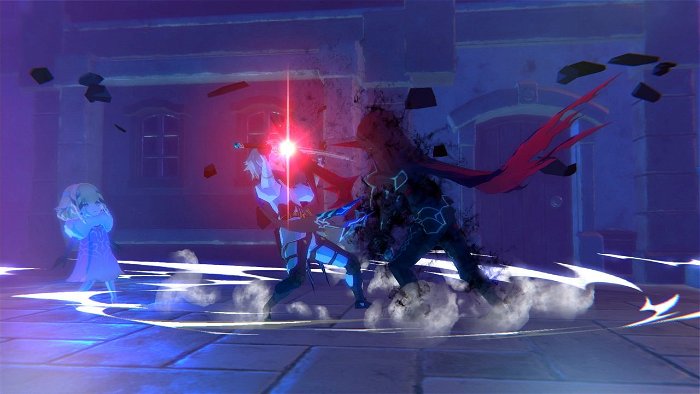
However, some boss fights do provide a challenge, and it’s here that Oninaki’s potential is most apparent. These bosses test your ability to swap daemons effectively, using your abilities in conjunction with each other to their full potential. Yet for every boss that’s like that, there’s another one that can be easily conquered by running around in a circle and occasionally activating a special attack. I frequently found that sometimes enemies would just not react to attacks that you’d make, standing still as you smack them repeatedly without repercussions. The wildly inconsistent difficulty in Oninaki is frustrating, which in turn caused me to stop caring about the daemons I was recruiting as I stuck with the ones that worked.
By the time I fought a boss that was just a reskinned version of an earlier flight, I was done with Oninaki. It’s repetitive to such a point that what glimpses of fulfilling combat I encountered were immediately pushed to the side in favour of getting to the next unfulfilling cutscene. It’s not a particularly long game, but Oninaki feels like it lasts for much longer than it actually does.
There are some good things in Oninaki. The fascinating premise means that there are scenes where the story hits the emotional beats it’s going for, even if it is improperly utilized for most of the time. And there are moments in battle that show just how good it could be when all the mechanics work together. But most of the time, Oninaki is dull. Whatever bright spots can be found do not make up for the drab story and tedious gameplay.

